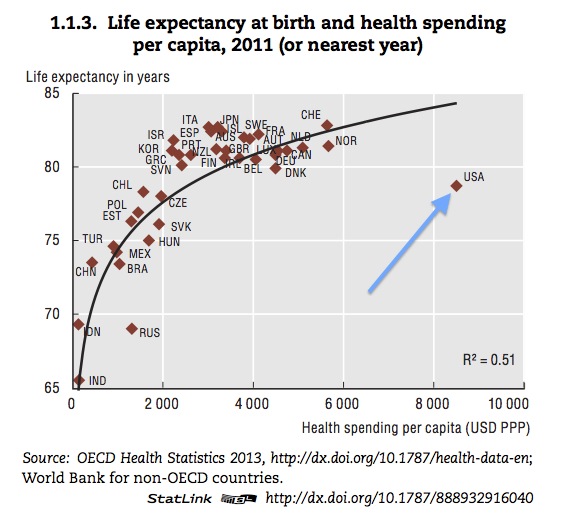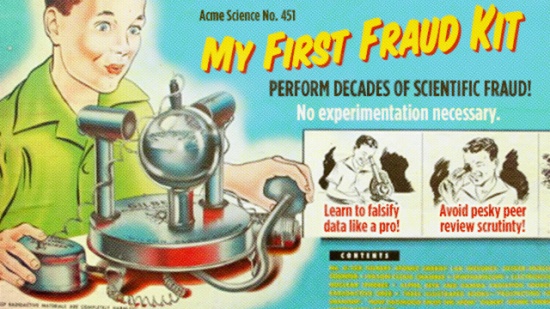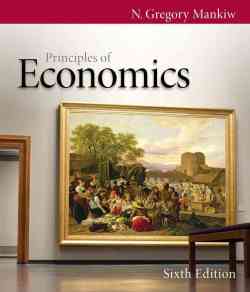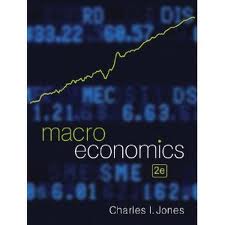Tony Lawson has changed our conversation
from Edward Fullbrook
The case for Lawson’s significance that I argued five years ago and appears below seems to me even truer today.
Tony Lawson has become a major figure of intellectual controversy on the back of juxtaposing two relatively simple and seemingly innocuous ideas. In two books and over fifty papers he has argued:
- that success in science depends on finding and using methods, including modes of reasoning, appropriate to the nature of the phenomena being studied, and
- that there are important differences between the nature of the objects of study of natural sciences and those of social science.
Taken together, these two ideas lead to the conclusion that the methods found to be successful in natural sciences are generally not the ones that should be used in social science.
By relentlessly focusing on this pair of ideas, Lawson has in a short space of time changed one of economics’ key conversations. His chapter, “A Realist Theory for Economics”, published in Roger Backhouse’s 1994 landmark collection New Directions in Economics Methodology, stands out like someone standing alone at a party. As recently as then the ideas of three thinkers, none of them economists, none social scientists and all of them dead, dominated economics’ literature on methodology. The index of Backhouse’s wonderful book powerfully illustrates this. It lists 47 pages that refer to Thomas Kuhn, 69 to Karl Popper and 73 to Imre Lakatos. Twelve of the book’s sixteen chapters (excluding Lawson’s) refer to one or more of the three and eight, as well as the back cover, to all three. Lawson does not refer to any of them. More significant, Lawson’s key reference point is ontology, a word that, except in the Introduction when Backhouse is introducing his collection’s odd man out, appears in none of the other chapters. Notably, when Lawson first uses “ontology” he feels it necessary, despite his highly specialized audience, to explain what the word means: “enquiry into the nature of being, of what exists, including the nature of the objects of study.” [Lawson 1994, p. 257]
Thirteen years later and anyone in economics who knows anything about methodology knows what “ontology” means. They also have come to realize that if Lawson’s basic conclusion were applied it would entail a programme of reform that would fundamentally change economics. A quick check with Google shows just how phenomenally successful Lawson has been at changing the conversation. Below are listed the number of web pages turned up for four trios of words. [30/03/07]
Popper, economics, methodology 300,000
Kuhn, economics, methodology 391,000
Lakatos, economics, methodology 82,300
Lawson, economics, methodology 264,000
ontology, economics, methodology 1,050,000
23/11/13
Popper, economics, methodology 923,000
Kuhn, economics, methodology 2,740,000
Lakatos, economics, methodology 194,000
Lawson, economics, methodology 2,760,000
ontology, economics, methodology 6,000,000
To appreciate the significance of the huge debate begun by Lawson, we need to look at its historical background.
Physics, economics and the philosophy of science
For those of you too young to remember, philosophy of science took off in a big way in the 1960s. Not for the first time, philosophy struggled to update its teachings to make them consistent with developments in science. . . . . . . . . . .
1843 to today
John Stuart Mill not only turned economics primary concerns away from production and distribution to those of value, he also made the case that economics, and the social sciences in general, should ape the methodology of astronomy and physics. . . . . . . . . . . . . .
Ontologies
By unveiling the mainstream’s ontology entailed by its methodology and by calling attention to economics’’ scientism, Lawson seeks to win the minds of the young and thereby bring about a reversal of the discipline’s traditional order of priority between method and substance. Above all Lawson’s project is one of persuading economists to do as physicists have always done: to take cognizance as best they can of the basic characteristics of their domain of inquiry and then proceed to develop and choose their methods accordingly.
Lawson builds his prescriptive analysis on the ontological platform of the social-philosophical school of thought called Critical Realism. This movement, a predominately Anglo-American affair, can through Continental eyes appear rather hackneyed. Lawson lists five key properties which, “according to the (philosophical) ontological account” that underwrites his project, social phenomena possess. [Reply to Davidsen, 15]
- They are produced in open systems.
- They possess emergent powers or properties.
- They are structured.
- They are internally-related.
- They are processual.
These core ontological ideas of Lawson’s project include nothing that at the time of Critical Realism’s inception in the 1970s was not already part of the woodwork of Continental philosophy and social theory. One example well illustrates the case. In Simone de Beauvoir’s The Second Sex (1949), one of the last century’s most influential books, the concept of gender and the ontological framework that supports it incorporate all five of the properties of social phenomena that Lawson embraces.
- open systems:
“humanity is something more that a mere species: it is a historical development;” [Beauvior, p. 725]- emergent:
“Woman is not a completed reality, but rather a becoming,” [p. 66]
“One is not born, but rather becomes, a woman.” [p. 295]- structured:
“For us woman is defined as a human being in quest of values in a world of values, a world of which it is indispensable to know the economic and social structure. We shall study woman in existential perspective with due regard to her total situation.” [p. 83]- internally-related:
”Otherness is a fundamental category of human thought.” [p. 17]
”The Other is posed as such by the One in defining himself as the One.” [p. 18]- processual:
”An existent is nothing other than what he does;” [p. 287]And of course above all Beauvoir was an existentialist so that, in Lawson’s words, “there is no one-to-one mapping from social structure to individual pathways, experience or personal identities [p. 65, this volume],” and in Beauvoir’s words, “she acquires this consciousness under circumstance dependent upon the society of which she is a member. . . . But a life is a relation to the world, and the individual defines himself by making his own choices through the world about him.” SS, 80-1][1]
Pointing out the historical pedigree of Lawson’s core ontological ideas is not a criticism but, on the contrary, an endorsement. It is the unoriginality that so suits Critical Realism for the task of critiquing mainstream economics. The legitimacy and fecundity of the ontological ideas that it pushes are so well-tested and so widely embraced outside of economics that it makes an ideal replacement for the ontology implicitly assumed by mainstream formalist methods. To my knowledge no one of repute in economics has dared to come forward to argue, against Lawson, that the economy is a closed system, that it is not characterized by the property of emergence, that it is not structured, that in it internal relations do not play a pivotal role and that it does not consist of an inter-related series of unending processes. Only a fool would publicly take up these arguments. And most economists, but not all, are also too sensible to suggest that economics should not take cognizance of the fundamental properties of its object of enquiry. In consequence, defenders of the status-quo find it difficult to frontally attack Lawson’s ideas. They tend to settle instead for indirect approaches. Easiest and in the short run probably strategically the wisest is just to ignore him. Another has been to hurl personal abuse at him, as in Herbert Gintis’s amazon.com review of Reorienting Economics. Another and increasingly common tactic has been to misrepresent the current situation in economics. There can be a big payoff for this approach when addressing a non-economist public, including economics students, or when addressing oneself in bad-faith. Out of the tens of thousands of papers published in mainstream economics journals over the past half century, one can easily find some, which having slipped past the gate keepers, embody one or more of the five properties. Wave these papers about vigorously enough and some people will be convinced that economics is already as Lawson would like it to be. Alternatively, one can misrepresent the formal properties of various methodologies, as when it is suggested that standard game theory describes an open system.
Thirteen years on
Thirteen years on, Backhouse’s collection belongs not just to another century but also to a different era. Although many economists, especially older ones, still entertain kissing-cousin fantasies about their relation to physicists, inhibitions have developed about acting them out in public. It is hard to imagine anyone accepting the Swedish prize today behaving as Samuelson did. Among methodologists the shift has been especially pronounced and quick. The majority may still in their heart of hearts prefer to view economic method through the physical science prism. But in the main they have, even if begrudgingly, taken on board the fact than any methodological commitment is also an ontological one. Questions concerning the fundamental nature of economic phenomena are not yet basic to the practice of economics, as the corresponding questions are in physics, but neither are they still treated as totally beneath attention. Today nearly all methodologists are either conversing with Lawson or heckling him from the edges of the room.
Source: http://www.paecon.net/PAEReview/issue49/Fullbrook49.pdf
[1] For more on Beauvoir’s ontology see Edward Fullbrook and Kate Fullbrook, Simone de Beauvoir: A Critical Introduction, Cambridge, UK: Polity Press, 1998, or Edward Fullbrook and Margaret A Simons, “Simone de Beauvoir and Jean-Paul Sartre” Gendering Western Philosophy: Pairs of Men and Women Philosophies from the 4thcentury B.C.E. to the Present, New York: Rowman and Littlefield, 2008, or “Chapter 14: Gender and Ethics” and “Chapter 15: The Second Sex” in Edward Fullbrook and Kate Fullbrook, Sex and Philosophy, London: Continuum, 2008, or the many papers in “Première Partie: La Philosophie du Deuxiène Sexe” in Cinquaternaire du Deuxième Sexe, editors Christine Delphy, Sylvie Chaperon, Kate Fullbrook and Edward Fullbrook, Paris: Éditions Syllepse, 2002, pp. 19-190.
39 country chart of life expectancy and health spending per captia
from David Ruccio
Economics textbooks – how to get away with scientific fraud
from Lars Syll
As is well-known, Keynes used to criticize the more traditional economics for making thefallacy of composition, which basically consists of the false belief that the whole is nothing but the sum of its parts. Keynes argued that in the society and in the economy this was not the case, and that a fortiori an adequate analysis of society and economy couldn’t proceed by just adding up the acts and decisions of individuals. The whole is more than a sum of parts. This fact shows up already when orthodox – neoclassical – economics tries to argue for the existence of The Law of Demand – when the price of a commodity falls, the demand for it will increase – on the aggregate. Although it may be said that one succeeds in establishing The Law for single individuals it soon turned out – in the Sonnenschein-Mantel-Debreu theoremfirmly established already in 1976 – that it wasn’t possible to extend The Law of Demand to apply on the market level, unless one made ridiculously unrealistic assumptions such as individuals all having homothetic preferences – which actually implies that all individuals haveidentical preferences.
This could only be conceivable if there was in essence only one actor – the (in)famousrepresentative actor. So, yes, it was possible to generalize The Law of Demand – as long as we assumed that on the aggregate level there was only one commodity and one actor. What generalization! Does this sound reasonable? Of course not. This is pure nonsense!
How has neoclassical economics reacted to this devastating findig? Basically by looking the other way, ignoring it and hoping that no one sees that the emperor is naked.
Having gone through a handful of the most frequently used textbooks of economics at the undergraduate level today, I can only conclude that the models that are presented in these modern neoclassical textbooks try to describe and analyze complex and heterogeneous real economies with a single rational-expectations-robot-imitation-representative-agent.
That is, with something that has absolutely nothing to do with reality. And — worse still — something that is not even amenable to the kind of general equilibrium analysis that they are thought to give a foundation for, since Hugo Sonnenschein (1972) , Rolf Mantel (1976) and Gerard Debreu (1974) unequivocally showed that there did not exist any condition by which assumptions on individuals would guarantee neither stability nor uniqueness of the equlibrium solution.
So what modern economics textbooks present to students are really models built on the assumption that an entire economy can be modeled as a representative actor and that this is a valid procedure. But it isn’t — as the Sonnenschein-Mantel-Debreu theorem irrevocably has shown.
Of course one could say that it is too difficult on undergraduate levels to show why the procedure is right and to defer it to masters and doctoral courses. It could justifiably be reasoned that way – if what you teach your students is true, if The Law of Demand is generalizable to the market level and the representative actor is a valid modeling abstraction! But in this case it’s demonstrably known to be false, and therefore this is nothing but a case of scandalous intellectual dishonesty. It’s like telling your students that 2 + 2 = 5 and hope that they will never run into Peano’s axioms of arithmetics.
Or — just to take another example — let’s see how the important macroeconomic question of wage rigidity is treated.
Among a couple of really good intermediate – neoclassical – macroeconomics textbooks, Chad Jones textbook Macroeconomics (2nd ed, W W Norton, 2011) stands out as perhaps one of the better alternatives. Unfortunately it also contains some utter nonsense!
In chapter 7 – on “The Labor Market, Wages, and Unemployment” – Jones writes (p. 179):
The point of this experiment is to show that wage rigidities can lead to large movements in employment. Indeed, they are the reason John Maynard Keynes gave, in The General Theory of Employment, Interest, and Money (1936), for the high unemployment of the Great Depression.
But this is pure nonsense. For although Keynes in General Theory devoted substantial attention to the subject of wage rigidities, he certainly did not hold the view that wage rigidities were “the reason … for the high unemployment of the Great Depression.”
Since unions/workers, contrary to classical assumptions, make wage-bargains in nominal terms, they will – according to Keynes – accept lower real wages caused by higher prices, but resist lower real wages caused by lower nominal wages. However, Keynes held it incorrect to attribute “cyclical” unemployment to this diversified agent behaviour. During the depression money wages fell significantly and – as Keynes noted – unemployment still grew. Thus, even when nominal wages are lowered, they do not generally lower unemployment.
In any specific labour market, lower wages could, of course, raise the demand for labour. But a general reduction in money wages would leave real wages more or less unchanged. The reasoning of the classical economists was, according to Keynes, a flagrant example of the “fallacy of composition.” Assuming that since unions/workers in a specific labour market could negotiate real wage reductions via lowering nominal wages, unions/workers in general could do the same, the classics confused micro with macro.
Lowering nominal wages could not – according to Keynes – clear the labour market. Lowering wages – and possibly prices – could, perhaps, lower interest rates and increase investment. But to Keynes it would be much easier to achieve that effect by increasing the money supply. In any case, wage reductions was not seen by Keynes as a general substitute for an expansionary monetary or fiscal policy.
Even if potentially positive impacts of lowering wages exist, there are also more heavily weighing negative impacts – management-union relations deteriorating, expectations of on-going lowering of wages causing delay of investments, debt deflation et cetera.
So, what Keynes actually did argue in General Theory, was that the classical proposition that lowering wages would lower unemployment and ultimately take economies out of depressions, was ill-founded and basically wrong.
Where Keynes found it unproblematic to link flexible wages and prices to involuntary unemployment, modern “Keynesian” macroeconomists has turned his theory into different kinds of fix-price models. But to Keynes, flexible wages would only make things worse by leading to erratic price-fluctuations. The basic explanation for unemployment is insufficient aggregate demand, and that is mostly determined outside the labor market.
So — for almost forty years neoclassical economics has lived with a theorem that shows the impossibility of extending the microanalysis of consumer behaviour to the macro level (unless making patently and admittedly unrealistic and absurd assumptions). Still after all these years neoclassical economists pretend in their textbooks that this theorem does not exist. Most textbooks don’t even mention the existence of the Sonnenschein-Mantel-Debreu theorem. And when it comes to Keynes and wage rigidities, Jones’s macroeconomics textbook is not the only one containing the kind of utter nonsense we’ve mentioned. But here the solution to the problem is more easy. Keynes books are still in print. Read them.
The real scientific challenge — that also has to be reflected in textbooks — is to accept uncertainty and still try to explain why economic transactions take place — instead of simply conjuring the problem away by assuming rational expectations, representative actors, universal market clearing and treating uncertainty as if it was possible to reduce it to stochastic risk. That is scientific fraud. And it has been going on for too long now.
Shocking! Breaking! Young economists discover that lower income leads to lower consumption!
We are living in a dark age of macro-economics indeed.
The empirical record of the last 300 years: (ultra-)unemployment in combination with wage cuts will lead to (much) lower incomes of households which leads to (much) lower expenditure of households. Recently, this has been happening for three or four or five years in a stretch, in countries like the Baltics and Ireland and Greece and Italy and Portugal and Spain and which is happening increasingly in the Netherlands and which will happen soon in Finland, too. Higher unemployemt in combination with lower incomes causes people to tighten their belts, which leads to a further decline of expenditure and a positive multiplier.
But on Voxeu, Petra Gerlach-Kirsten, Rosanna Merola and Connor O’Toole discover that lower household income leads to lower household expenditures. Which is puzzling to them as non-monetary rational consumer general equilibrium models had led them to believe that lower incomes do not lead to lower expenditure. Because rational households in an ergodic world know their future incomes and smooth consumption, taking their future incomes, future interest rates and future ideas and preferences into account when spending today, while they are also not cash constrained:
“We find that consumption growth is lower during financial crises, particularly during banking crises, and that a drop in income reduces consumption in the short run.”
Arghhh… we are not talking about lower growth here, we are talking about unimaginable drops of 30 to 40% in some countries. A single look at the national accounts will show their second point and would have shown that five, ten, fifteen and twenty years ago. And they do not even mention unemployment.
This line of reasoning is of course influenced by the ideas of people like Milton Friedman who mixed up non-monetary consumption (i.e. the use of consumer goods) and ‘utility’ with monetary consumption (i.e. the purchase of consumer goods) and production, to argue that consumption was non-cyclical, signifying that all kinds of counter-cyclical government policies were not necessary. But monetary consumption is cyclical and contrary to the statements of Gerlach-Kirsten, Merola and O’Toole it has been quite cyclical all along, especially expenditure on consumer durables. In the real world, the smoothing of the use of these durables leads to more cyclical purchases!
Dear friends, if post war consumption did not show the large cyclical developments of the past this was because incomes were smoothed by automatic stabilizers, minimum, wages, whatever, and not because households smoothed expenditures. However – governments have given up on this, at least in the EU, and ultra-unemployment (oops, ultra-unemployment is not even mentioned in their article…) and volatile expenditure are back, together with highly volatile consumer expenditures.
I agree, however, with their point that household heterogeneity should be taken into account – there is a difference between wealthy and poor households.




